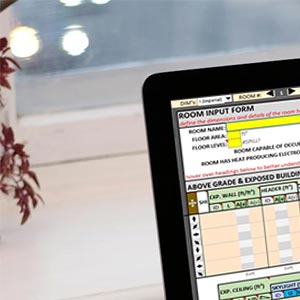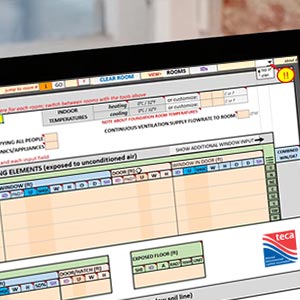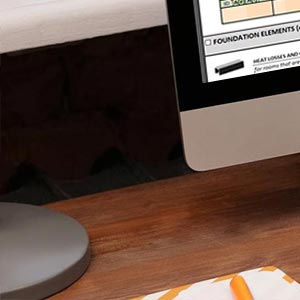print | Email a Friend | back
Are you a TECA member? If so, you pay our member's discount pricing. Please login or find out here if you qualify for our membership pricing.
This manual was designed for use with TECA's Quality First Heat Loss & Heat Gain course and TECA's Heat Loss & Heat Gain calculator.
2nd Edition, April 2019
28 pages, coil-bound book
The Heat Loss & Heat Gain (HLHG) manual covers the basics of heat loss and heat gain are discussed in detail, and important considerations for any project. TECA's HLHG calculation method is completed to the CSA F280 standard that is required in the BC and National building code, per section 9.33.5.1.
This manual will give participants an understanding of the different components of heat loss and heat gain. Importantly, these dynamics must be understood by anyone doing a calculation. This section will form the foundation for understanding each input in the TECA HLHG calculator, and the driving force behind heat losses or gains.
The HLHG manual includes:
- Heat transfer pathways: Modes of heat transfer through a building, including conduction, convection, and radiation.
- Design temperatures: Indoor & outdoor design conditions and the impact of temperature differential.
- Above grade elements: How effective thermal resistance (R-values) are calculated and the appropriate method of measuring a dwelling's wall areas.
- Below grade elements: Considerations for determining the heat loss through foundation elements.
- Infiltration: How leakage is determined and stack effects.
- Ventilation: The impacts of ventilation of heat loss & heat gain calculations and different methods of meeting the ventilation requirements of a building.
- Heat loss & heat gain from distribution systems: Considerations for thermal losses through ductwork and radiant piping.
- Heat gain from opaque and transparent elements: The factors that determine when conduction and solar radiation are considered in the heat gain calculations.
- Shading & Overhangs: The effects of adding blinds or window shades and physical features such as overhangs into the heat gain calculations.
- Internal loading: The considerations for heat generation inside a dwelling, which impact heat gain calculations.
DISCLAIMER: This manual was developed in consultation with, and using information obtained from manufacturers, suppliers, contractors and others with specialized experience. It is subject to revision as further use and investigation may show such revision necessary or desirable. Installations and designs that comply with this manual will not necessarily be acceptable if, when examined and tested, they are found to have features that impair the result contemplated by these requirements. The authors and editors assume no responsibility and accept no liability for the application of the principles or techniques contained in this manual or for errors or omissions and expressly disclaim any such responsibility.






